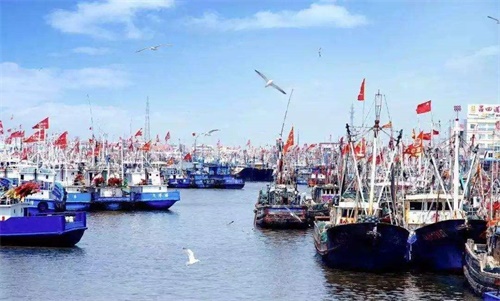
China’s closed fishing season, which reduces its domestic seafood supply and pushes prices upward, began this May. For example, white shrimp prices have been on the rise in the South China since mid-April, and some are set to exceed 70 yuan/jin (1 jin=0.5 kilo) during the closed fishing season.
This season is bad news for live seafood lovers in China but a great opportunity for overseas suppliers. Consider the example of Ningbo, which has just started its four-month-long closed season. Large quantities of seafood have flooded into the city, and even before the season. On April 25th alone, 200-odd-ton frozen squids from Argentina had arrived in Ningbo. And as customs statistics show, the city’s seafood import volume has ballooned by 210% this March to reach 9,600 tons, compared with the previous month. Meanwhile, the value has also jumped by 70.1% to 0.237 billion yuan.
According to an aquatic company in Zhoushan city, it has ordered seafood from foreign suppliers well before the closed season to meet domestic demand, and now it has planned to raise orders. Locals like imported seafood such as white shrimp, salmon and lobsters, whether they are frozen or live, said the manager.
With the implementation of prolonged closed fishing seasons, locals are used to buying great quantities of seafood before the season, and some even rent refrigerated warehouses for stocking seafood. Wholesalers also tend to freeze shrimp and crab in preparation for greater demand during the season.
According to the estimation of FAO, seafood prices will be rising within the coming 10 years thanks to increasing demand and slowing expansion of aquaculture. And China, as an important seafood supplier worldwide, is believed to influence global seafood prices to great extents.
Its stricter closed season, as well as its operations against facilities with heavy pollution but low efficiency, are believed to cut global seafood supply to great extents. Its fish supply is estimated to reduce by 17% in 2030 compared with that of 2016, which in turn slows down growth rate of global seafood supply.
Annual growth rate of global aquaculture is expected to drop from 5.7% during 2003 to 2017 to only 2.1% during 2017 to 2030, mainly due to China’s slower aquaculture expansion. Its action is to stimulate price increase in China and then global ones. For example, average fish price worldwide are likely to increase 25% by 2030 compared with that of 2016.
Meanwhile, with greater demand worldwide, fish meal price is also likely to increase by about 20%, which is believed to affect aquaculture. Farmed seafood make up a greater proportion of global supply than the wild ones, so their prices are set to influence the market more. Apart from these, the market is also likely to face other uncertainties like President Trump’s trade war and Chinese determination to fight back rather than surrender like some others had done before.
No.599,Eshishan Road,
Shidao Town, Rongcheng City
WMB@haiboseafood.com
support@haiboseafood.com
phone:+86-0631-7366569
fax:+86-0631-7366567
Rongcheng Haibo Seafood Co., Ltd. is located in Shidao Administration District of Rongcheng City, a beautiful and prosperous coastal city on the easternmost tip of Jiaodong Peninsula.
Copyright © Haibo Seafood Co., Ltd. 鲁ICP备19038903号 
 鲁公网安备 37108202000545号
鲁公网安备 37108202000545号